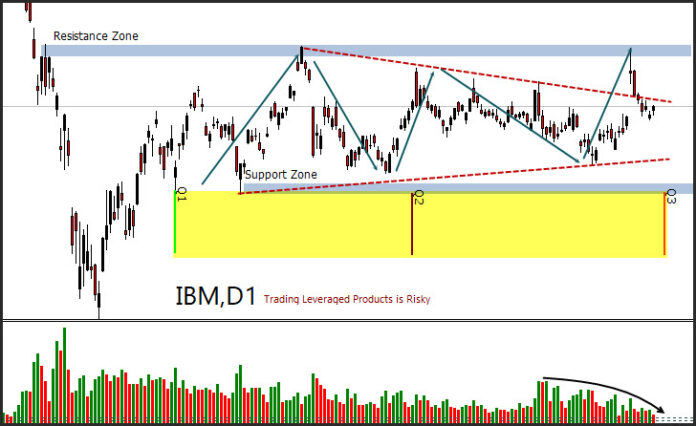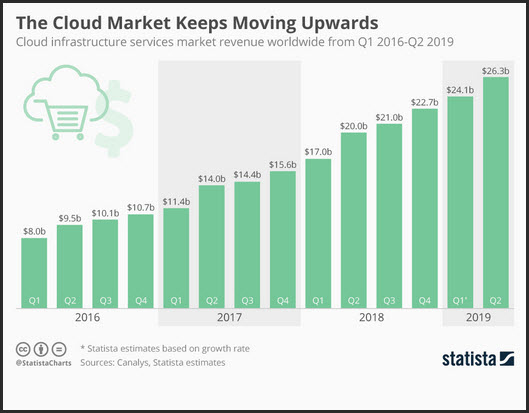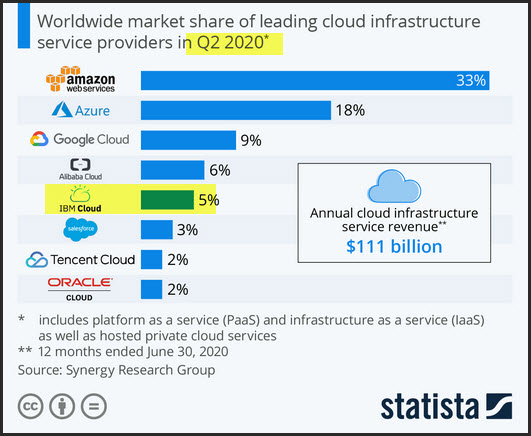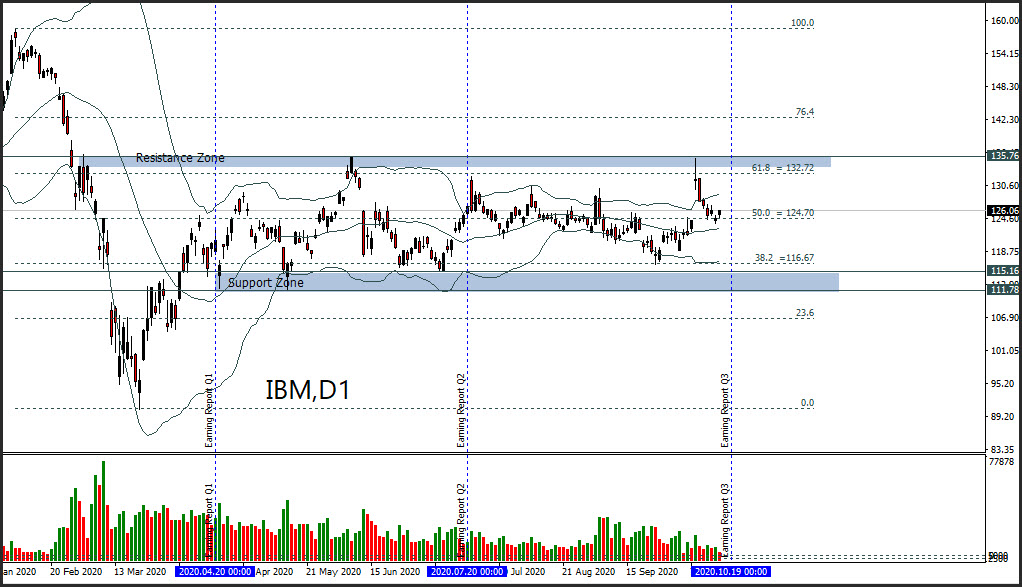International Business Machines Corporation (IBM) is a multinational consulting and technology company, cloud platform and cognitive solutions headquartered in Armonk, New York. On 8 October 2020, IBM announced the move of its Managed Infrastructure Services unit from its Global Technology Services division to a new public company. IBM manufactures and sells computer hardware, middleware and software, and provides hosting and consulting services in areas ranging from mainframe computers to nanotechnology. It is also a large research organization; in 2020 it holds the record for the most US patents. IBM, nicknamed Big Blue, is one of the 30 companies that are members of the Dow Jones Industrial Average and is one of the largest companies in the world.
IBM’s core business is company-wide information technology and it is this arena that the company is targeting for its next AI initiative: IBM Watson AIOps. Launched in May, the goal is to provide new AI -powered capabilities and services to help companies automate various aspects of IT development, infrastructure and operations. Its main focus is to make the AI “speak” code. The market demand for AI communicating in code is enormous.
This started with the partnership with ServiceNow in 2011 and the deal was expanded in 2018 to include services, taking their partnership to a new level. IBM recently announced a spin-off of its legacy business to focus more on the cloud, which will harness its core strengths in the hybrid cloud and match them with ServiceNow’s intelligent workflows and operations management competencies. This new collaboration integrates services at a deeper level to bring simplicity to IT across multiple clouds and enable deployment in any location. They will combine the capabilities of the IBM Watson AIOps with ServiceNow’s platform, enabling their clients to diagnose problems more quickly, gain insights and integrate with the business tool chain.
IBM is an old company that has existed for a long time. From the 1950s – 80s, IBM was the king of commercial computers, heavy, wardrobe-sized machines that cost millions of dollars and assisted large companies in processing data. IBM launched its first desktop computer, the IBM Personal Computer, in the 80s and quickly became the standard, with sales exceeding 2 times that of Apple in 1984. However, with the emergence of tech companies from Silicon Valley, IMB ran into financial problems and nearly went bankrupt in the 90s before shifting its business to services.
A decline in share prices in early 2012 and declining sales led IBM to make a big decision by buying software company Red Hat for $34 billion. IBM is now leveraging its technology and talent, becoming a strong competitor to Amazon and Microsoft in the cloud and this year, IBM started moving its entire business to the cloud. IBM is back and taking on two of the of the technology industry’s most profitable companies head-on.
The cloud computing market has doubled its revenue over the past three years, posting strong and sustainable growth. The growth of the cloud infrastructure service space is driven by the increasing demand for information and data storage. The cloud allows users to store and access information via an internet connection so that instead of storing information on one device, users can access information from any device with an internet connection.
IBM last posted its quarterly earnings results on July 20, 2020. The technology company reported earnings per share of $2.18 for the quarter, beating the consensus estimate of $2.14 by a slight margin of $0.04. IBM had $18.12 billion in revenue in Q2, compared with a previous estimate of $17.72 billion. Q2 revenue fell by 5.4% compared to the same quarter last year.
Due to the pandemic-driven decline in Q2 earnings, experts expected pressure on global cognitive software and technology sales. Global technology fell this year, due to a decline in application management and consulting. However, total cloud revenue rose 30% to $6.3 billion with a gross profit margin of 48%, one percentage point above consensus. Cash from operating activities totaled $3.6 billion with an FCF of $2.3 billion. IBM ended the quarter with $14.3 billion in cash including marketable securities, up from $5.2 billion late last year. The total debt is $64.7 billion, including $21.9 billion in Global Financing debt.
Even though it cannot be compared to Amazon and Microsoft, one of the added values of IBM is that it trades much cheaper than the cloud giants. It also ranks 5th under Alibaba in the same line of business in the cloud provider service infrastructure Q2-2020. With so many advantages, IBM could grow into one of the best cloud trades of this decade. IBM has generated $12.81 earnings per share over the past year and currently has a price-earnings ratio of 14.3.
The Q3 earnings report will be published on Monday, October 19, 2020. IBM expects to report revenues of $17.6 billion, slightly above the previous consensus of $17.72 billion, with a non-GAAP gain of $2.58 per share, as per the old consensus. Managed infrastructure by running data centers and other facilities for customers accounts for about 1/4 of total revenue.
In its October 8 announcement of plans to move its managed infrastructure services business, IBM did not name the new company or who will run it. IBM said it plans to spend $2.3 billion this year on streamlining its business. That implies the possibility of substantial layoffs and facility closures that IBM has not specified. There may be more details to come in the income statement later.
The question is, will the company’s earnings for Q3 decrease to provide revenue guidance due to the uncertainty created by the pandemic? IBM CEO Arvind Krishna said that the company will be laser focused on the $1 trillion worth of hybrid cloud opportunities, referring to a computing system that combines the private cloud operated by the company itself and the public cloud of the company.
IBM shares rose 0.83% to $125.93 on Friday. The USA30 closed up 0.39% at 28,606 and and trades at 28,725 ahead of the cash market open later today. Technically, the prices are consolidating between the May low and the June high. The price is above the 50.0% retracement level and is in the upper BB band space with the transaction volume tending to decrease ahead of the Q3 earnings report.
Disclaimer: Nothing in this communication contains, or should be considered as containing, an investment advice or an investment recommendation or a solicitation for the purpose of purchase or sale of any financial instrument.
Recommended Content
Editors’ Picks
EUR/USD fluctuates near 1.0700 after US data

EUR/USD stays in a consolidation phase at around 1.0700 in the American session on Wednesday. The data from the US showed a strong increase in Durable Goods Orders, supporting the USD and making it difficult for the pair to gain traction.
USD/JPY refreshes 34-year high, attacks 155.00 as intervention risks loom

USD/JPY is renewing a multi-decade high, closing in on 155.00. Traders turn cautious on heightened risks of Japan's FX intervention. Broad US Dollar rebound aids the upside in the major. US Durable Goods data are next on tap.
Gold stays in consolidation above $2,300

Gold finds it difficult to stage a rebound midweek following Monday's sharp decline but manages to hold above $2,300. The benchmark 10-year US Treasury bond yield stays in the green above 4.6% after US data, not allowing the pair to turn north.
Worldcoin looks set for comeback despite Nvidia’s 22% crash Premium

Worldcoin price is in a better position than last week's and shows signs of a potential comeback. This development occurs amid the sharp decline in the valuation of the popular GPU manufacturer Nvidia.
Three fundamentals for the week: US GDP, BoJ and the Fed's favorite inflation gauge stand out Premium

While it is hard to predict when geopolitical news erupts, the level of tension is lower – allowing for key data to have its say. This week's US figures are set to shape the Federal Reserve's decision next week – and the Bank of Japan may struggle to halt the Yen's deterioration.



